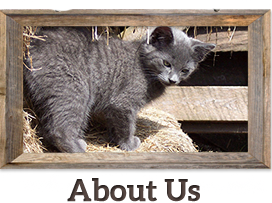Elizabethan Collars in Birds
Why would my bird need a collar?
 Following trauma or surgery, or in the case of a bird with feather destructive behavior (self-mutilating or feather-picking), various protective devices or collars (often called Elizabethan collars or restraint devices) may be used to prevent a bird from further harming or traumatizing itself.
Following trauma or surgery, or in the case of a bird with feather destructive behavior (self-mutilating or feather-picking), various protective devices or collars (often called Elizabethan collars or restraint devices) may be used to prevent a bird from further harming or traumatizing itself.
Do not attempt to make your own collar. A collar should be used only under the supervision of a veterinarian familiar with birds, and only in conjunction with ongoing efforts to manage the underlying cause of the bird’s self-harm. The bird’s nutritional, medical, traumatic, surgical, and behavioral issues must be addressed, because the collar is only a “bandage” solution to facilitate healing and keep the bird from further harming itself.
The use of a collar without addressing underlying issues will simply frustrate your pet bird and may cause more problems. There is always an adjustment period where some birds may stress themselves severely or cause bodily harm to themselves, so close observation is always advised.
What types of collars are available?
There are various kinds of collars available, including commercial and custom-designed products. Collars must be adapted for your bird’s specific size, needs, and temperament. Some veterinarians design and make their own collars. Some collars are made from padded plastic disks, customized to the size and needs of your bird; some are soft, tubular devices that gently extend the neck; some are made of thick fleece material; some are soft and some are rigid.
How will my bird respond to his collar?
Wearing a collar is a significant event for your pet and has potential risks associated with it. It is important that the collar itself does not cause further trauma to your bird.
- Collars must be lightweight so they do not impair the bird’s mobility.
- The collar or restraint device must be the proper diameter to allow the bird to reach their food and water dishes properly.
- The collar must not get caught in the cage or on cage items.
- The collar must be easy for an owner to take it off should there be any problems, but not easy for the bird to remove.
Initially, most birds will flap, flail, and fight to get this “foreign” object off their body, because they do not understand it. It is recommended to have the bird stay in hospital for observation after a collar has been applied to monitor how they are coping and acclimatizing to it.
While in the hospital, the bird may be placed in a padded incubator or cage to protect it while it adapts to the collar. As the day progresses, the bird will hopefully learn to accept having a collar. Then, it can explore the cage and learn to manage food and water dishes.
 If the collar harms the bird somehow, or if the bird manages to get the collar off, to chew or damage the collar, or to get around the collar to access the protected site, the collar will need to be removed, remade, or adjusted. Some individual birds and certain species fight the collar more than others do. Your veterinarian may use a sedative to help your bird calm down during the adjustment period. Some birds will never tolerate the use of a collar.
If the collar harms the bird somehow, or if the bird manages to get the collar off, to chew or damage the collar, or to get around the collar to access the protected site, the collar will need to be removed, remade, or adjusted. Some individual birds and certain species fight the collar more than others do. Your veterinarian may use a sedative to help your bird calm down during the adjustment period. Some birds will never tolerate the use of a collar.
How do I care for the bird and collar when I get home?
When you get your bird home, you may need to make temporary modifications to your bird’s cage during the adjustment period. It is advised to put padding on the bottom of the cage and lower all perches in the cage so that, if the bird falls, it will be protected and as safe as possible.
Food and water dishes must be placed such that the bird can easily bend over and eat or drink with the collar on. Ensure your pet is eating and drinking. Monitor your bird’s feces closely. Lack of fecal material means that your bird is not eating.
In an emergency: If your bird is stressed, depressed, or otherwise compromised or endangered by the collar, call your veterinarian as soon as possible.
© Copyright 2025 LifeLearn Inc. Used and/or modified with permission under license. This content written by LifeLearn Animal Health (LifeLearn Inc.) is licensed to this practice for the personal use of our clients. Any copying, printing or further distribution is prohibited without the express written consent of LifeLearn. This content does not contain all available information for any referenced medications and has not been reviewed by the FDA Center for Veterinary Medicine, or Health Canada Veterinary Drugs Directorate. This content may help answer commonly asked questions, but is not a substitute for medical advice, or a proper consultation and/or clinical examination of your pet by a veterinarian. Please contact your veterinarian if you have any questions or concerns about your pet’s health. Last updated on Sep 2, 2025.


